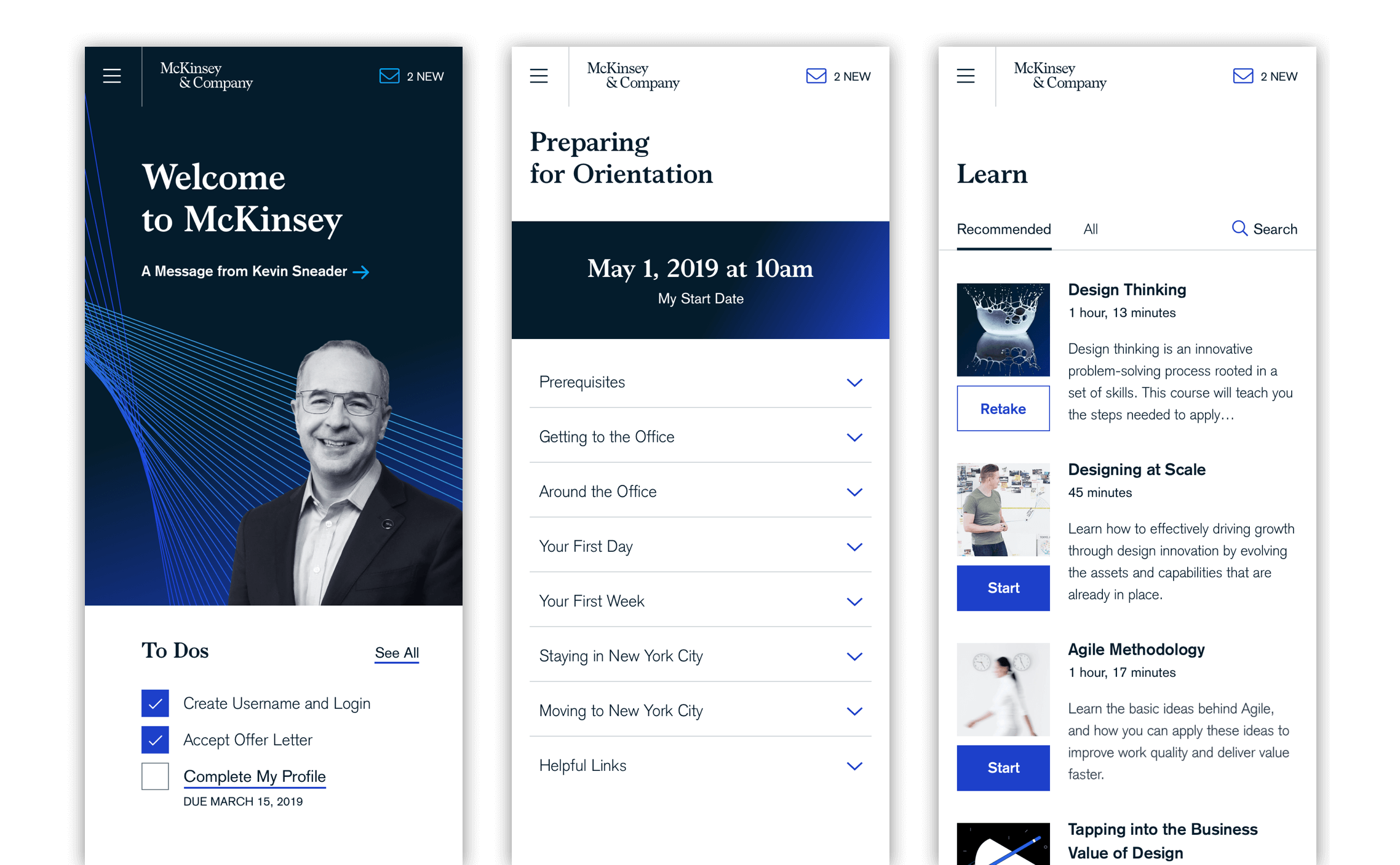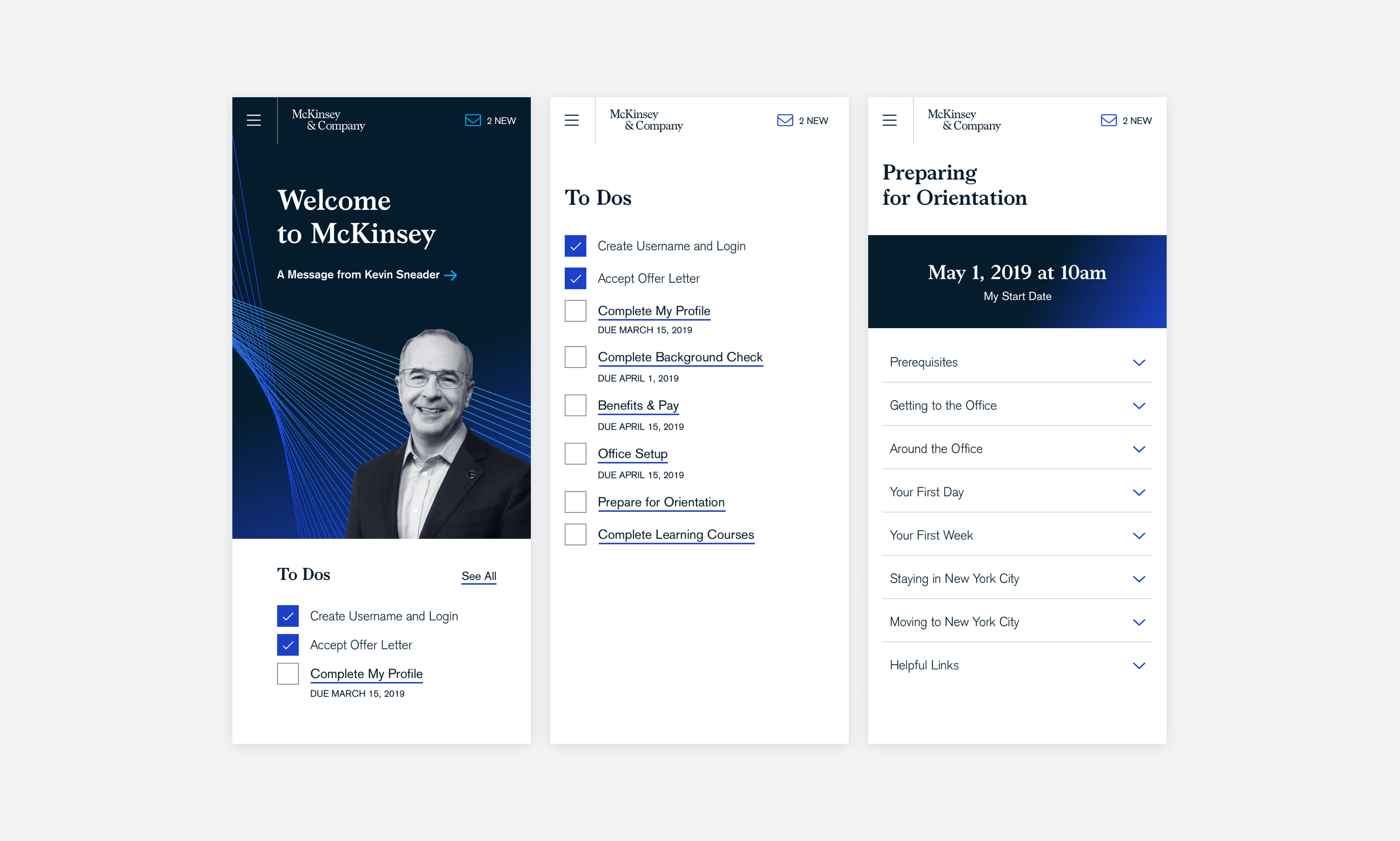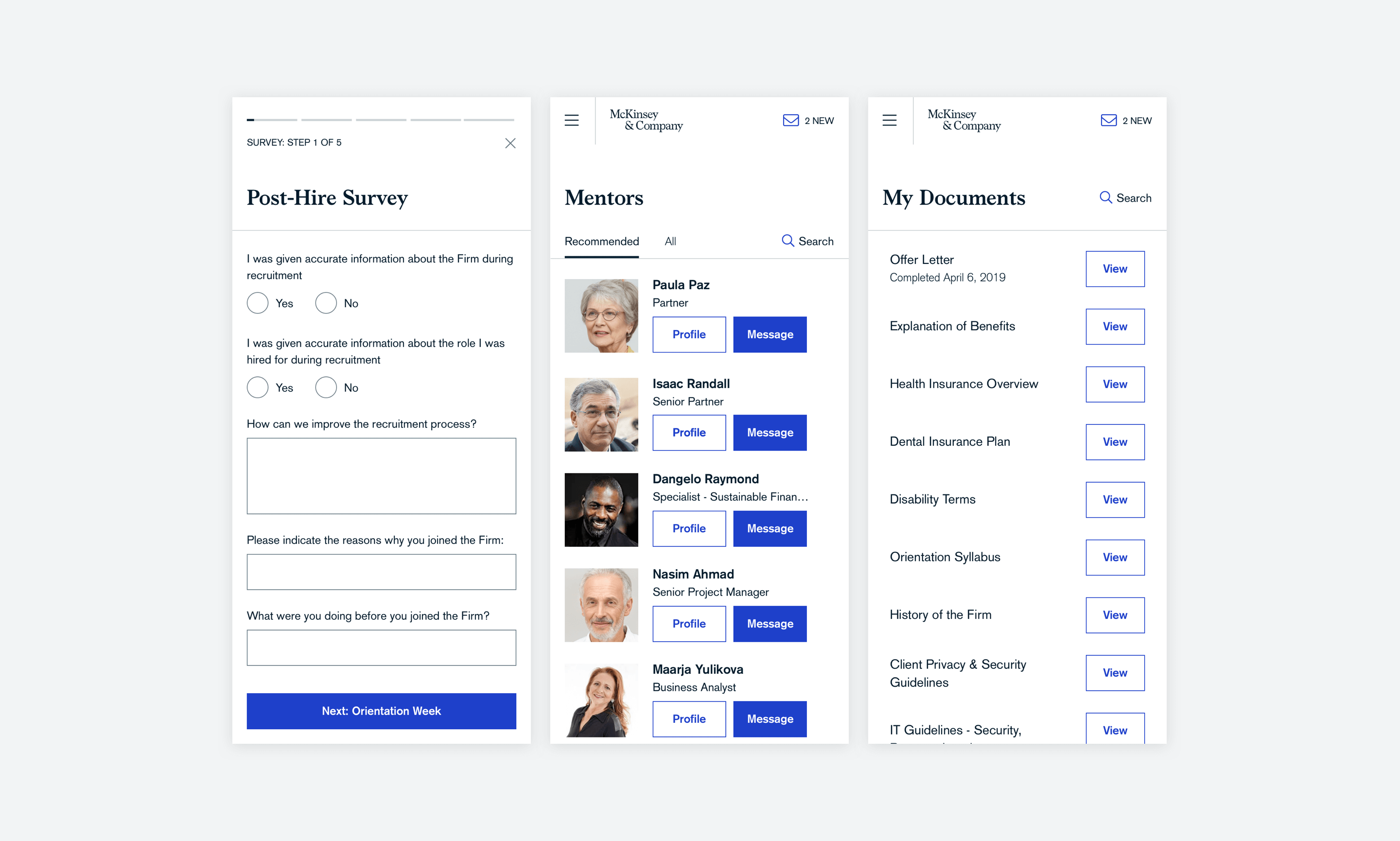Welcome to McKinsey
Reinventing a consulting firm's global new hire experience

Summary
With a workforce of 32,000 strong and counting, McKinsey & Co. brings in hundreds of new hires and returning alumni each year, along with several thousand recent graduates into junior business analyst roles.
I joined as a Product Design Lead for their digital onboarding experience in 2019. Initially my focus was on what was handed over to me by my predecessor: making sure HR’s profile and benefits forms were digitized across all 72 countries.
However, after my own experience with the firm’s onboarding firsthand and documenting other new hires’ experiences, I decided to explore a holistic experience for new colleagues that would facililate better communication and better automate handoff between the teams working behind the scenes to recruit, set up, orient and train new hires.
Discovery
I used three approaches:
Journey Map Creation
Connecting the dots between the new hire’s journey and 12 internal team’s processes
New Colleague Interviews
Hour-long interviews delving into colleague’s recent experiences as a new hire
New Hire Diary Studies
Twice a week questionnaires for 12 weeks on new hire's emotions, thoughts and needs

A Mobile-First, Task-Based Approach
- New hires were not always near a desktop or laptop that they could perform personal tasks on. Many were still in school, others still working at a previous role, and some were traveling or moving. Taking a mobile-first approach to the onboarding experience allows for greater flexibility and options as they complete tasks and gather required documentation
- New hires often express doubt, uncertainty and confusion as to what is required of them, and when. Creation of a To Dos checklist with due dates based on their hire date helps ensure they’ll get their tasks done, and on time
- Orientation week was often overwhelming for new hires, in terms of preparation, information to absorb, and, for some, travel to or a move to a new city or country was involved. Having everything they needed in one place helps minimize cognitive overload and ensure full readiness

Inclusive & Informative Profiles
- Some new hires noted the lack of inclusion when entering their personal information. New fields covering gender identity, preferred pronouns, relationship status and more were added
- Post-hires noted that filling out their intranet profile seemed a duplicative task after they were asked so many questions during onboarding. By adding information about their experience, expertise and interests in advance they are able to save time
- This gives the Learning team the ability to suggest courses and training that new hires can begin well in advance of their start date

Bettering New Hire Communications
- New hires were often not sure of who they should speak to when they needed help, nor who was emailing them with new task requests or onboarding information. Establishing colleague profiles, a messaging center linking those profiles to the messages a pre-hire receives and a list of helpful contacts gives greater visibility into who they ask, and for what
- For any questions that new hires still aren’t sure whom or where to ask, a comprehensive list of topics for everything from IT to disabilities support options to obtaining visas is available in Get Help

The Post-Hire Experience
- New colleagues receive feedback surveys from four or more internal teams over the course of the first few months, each asking questions pertaining to one thing, such as their HR experience, their onboarding experience or their learning experience, resulting in survey fatigue. A single consolidated survey sent out at specific intervals increases both open and completion rates
- Thousands of recent business administration graduates join the firm every year. Providing an easy way to find and connect to available mentors within the firm ensures their success while giving partners the opportunity to share their experience and knowledge
- Every document shared with new colleagues before, during and after their first day is available in the app for easy reference, reducing the burden on HR to provide paper copies or to resend materials
Conclusion
By tying together so many moving parts that together help determine the successful and smooth onboarding of a new colleague, statistically that colleague is more likely to remain with the firm longer and be a happier, more productive teammate.
In testing of the above prototypes on colleagues who had recently undergone traditional firm onboarding, they responded with positive feedback across the board. My next step was to prepare individualized presentations for each of the 12 teams involved in onboarding whose work it would impact (and help make easier) in order to gain buy-in on the project.